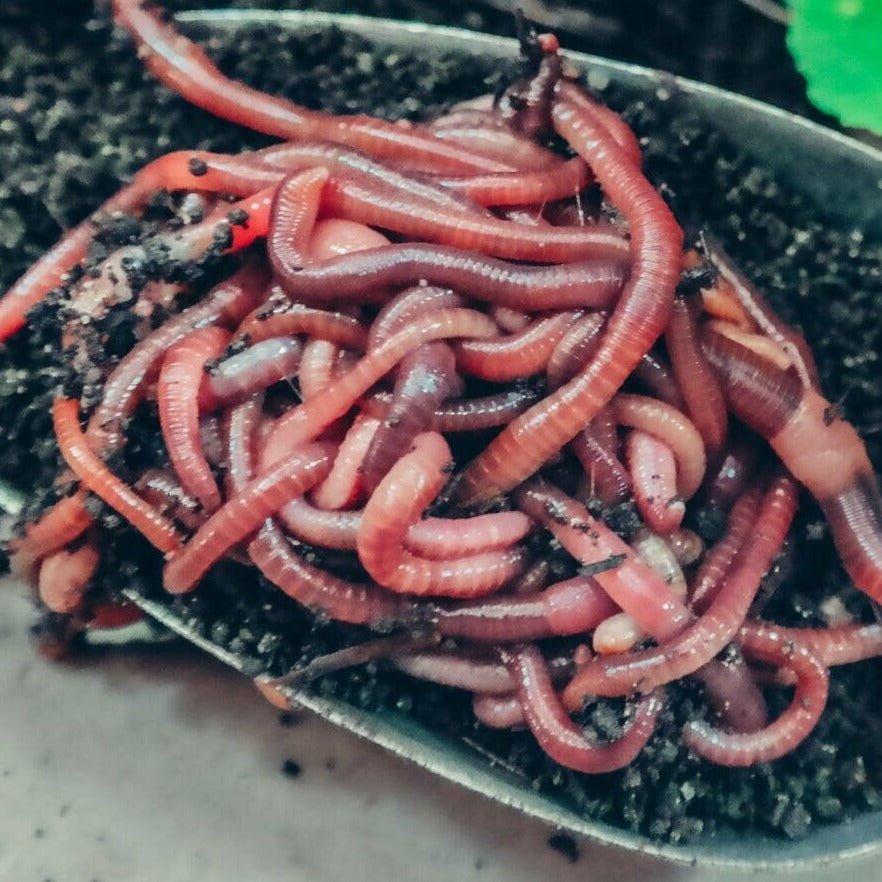Red Wiggler Worms Demystified: Unlocking the Keys of Vermiculture for Greener Living and Nutrient-Rich Soil
In the world of sustainable methods for enhancing soil high quality and advertising eco-conscious living, red wiggler worms play a pivotal yet usually neglected role. Red Wiggler Worms. Understanding the ins and outs of caring for these worms, enhancing their atmosphere, and using their castings can lead to a greener way of living and much healthier dirt for plants to flourish.
The Function of Red Wiggler Worms
Red Wiggler worms play a crucial function in composting systems by efficiently breaking down raw material right into nutrient-rich castings. These ravenous eaters take in a range of natural materials, such as kitchen scraps, backyard waste, and paper items. As they feed, the worms' digestive system processes break down the raw material right into a penalty, dark, and nutrient-dense material called worm castings or vermicompost.
The spreadings produced by Red Wiggler worms are extremely helpful for soil health and wellness and plant growth. They are rich in necessary nutrients like nitrogen, phosphorus, and potassium, which are crucial for supporting healthy and balanced plant advancement. In addition, worm spreadings contain helpful germs and enzymes that assist boost dirt framework, increase water retention, and boost nutrient uptake by plants.
Advantages of Vermicomposting

Moreover, vermicompost, the nutrient-rich end item of vermicomposting, offers as an exceptional organic fertilizer and soil conditioner. It improves dirt framework, improves dirt oygenation, and boosts dirt dampness retention. These buildings add to much healthier plants with stronger origin systems and much better resistance to illness and pests. Vermicompost also enhances the dirt with vital nutrients like potassium, nitrogen, and phosphorus, advertising plant development and total soil fertility.
Furthermore, vermicomposting assistances lasting horticulture techniques by giving a chemical-free and all-natural alternative to synthetic plant foods. Red Wiggler Worms. This eco-friendly strategy not only improves the soil but also helps in reducing reliance on damaging chemicals, promoting a greener and much more lasting means of gardening
Establishing Up a Worm Bin
When establishing a worm bin for vermicomposting, proper configuration is critical to make sure the success of the composting procedure. The very first action in establishing up a worm bin is choosing a suitable container.
After adding the bed linen, introduce the red wiggler worms to the bin. It is advised to start with a handful of worms visit this page and progressively raise as they multiply. The worms must after that be offered with food scraps such as vegetables and fruit peels, coffee premises, and eggshells. It is necessary to prevent including meat, dairy, oily, or salted foods to stop drawing in bugs and developing unpleasant odors.
Frequently monitor the dampness degrees and temperature level in the worm bin to guarantee optimal problems for the worms. With correct arrangement and maintenance, the worm container will effectively convert natural waste into nutrient-rich garden compost for your plants and yard.
Harvesting Worm Spreadings
To successfully collect nutrient-rich worm castings from your vermicomposting system, an organized harvesting approach is essential. When it comes time to harvest the worm castings, there are a couple of essential actions to follow to ensure a successful procedure. To start with, stop including fresh food scraps to one side of the worm container for a couple of weeks prior to gathering. This motivates the worms to move to the side with fresh bedding and food, making it less complicated to dig the castings from the opposite side.

Troubleshooting Common Issues
Identifying and resolving typical challenges that may emerge throughout the vermicomposting process is critical for keeping a healthy and productive worm bin. One usual issue that vermicomposters encounter is overfeeding. Including excess food scraps can cause an accumulation of my explanation moisture and level of acidity in the worm container, possibly hurting the worms. To stop this, feed the worms in moderation, guaranteeing that the food scraps are appropriately damaged down before adding more. Another problem is unpleasant odors originating from the worm bin. Foul smells show anaerobic problems, commonly triggered by overwatering or insufficient ventilation. To correct this, adjust the wetness levels by including completely dry bed linens products like shredded paper or cardboard and boost oygenation by transforming the bedding consistently.
Furthermore, if the worm populace is decreasing or the worms show up unhealthy, it might be due to environmental stressors such as severe temperatures or pH levels. Monitoring these aspects and making necessary modifications is essential for the well-being of the worms. By repairing these usual issues immediately, vermicomposters can make certain a effective and smooth vermicomposting procedure while preserving a prospering worm population.

Final Thought
In conclusion, red wiggler worms play an essential duty in vermiculture by breaking down organic matter into nutrient-rich soil. Establishing up a worm bin is crucial for successful vermiculture, and harvesting worm spreadings offers important garden compost for horticulture.
As they feed, the worms' gastrointestinal processes damage down the organic issue into a penalty, dark, and nutrient-dense material known as worm castings or vermicompost.
The spreadings created by Red Wiggler worms are highly beneficial for soil health and wellness and plant development. Adding excess food scraps can lead to a build-up see this of wetness and level of acidity in the worm container, possibly hurting the worms.In addition, if the worm population is declining or the worms appear unhealthy, it might be due to ecological stress factors such as extreme temperatures or pH levels. Setting up a worm container is vital for effective vermiculture, and harvesting worm castings gives valuable compost for horticulture.